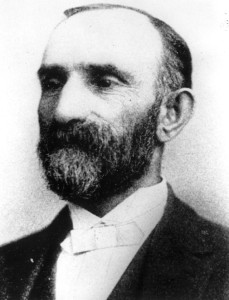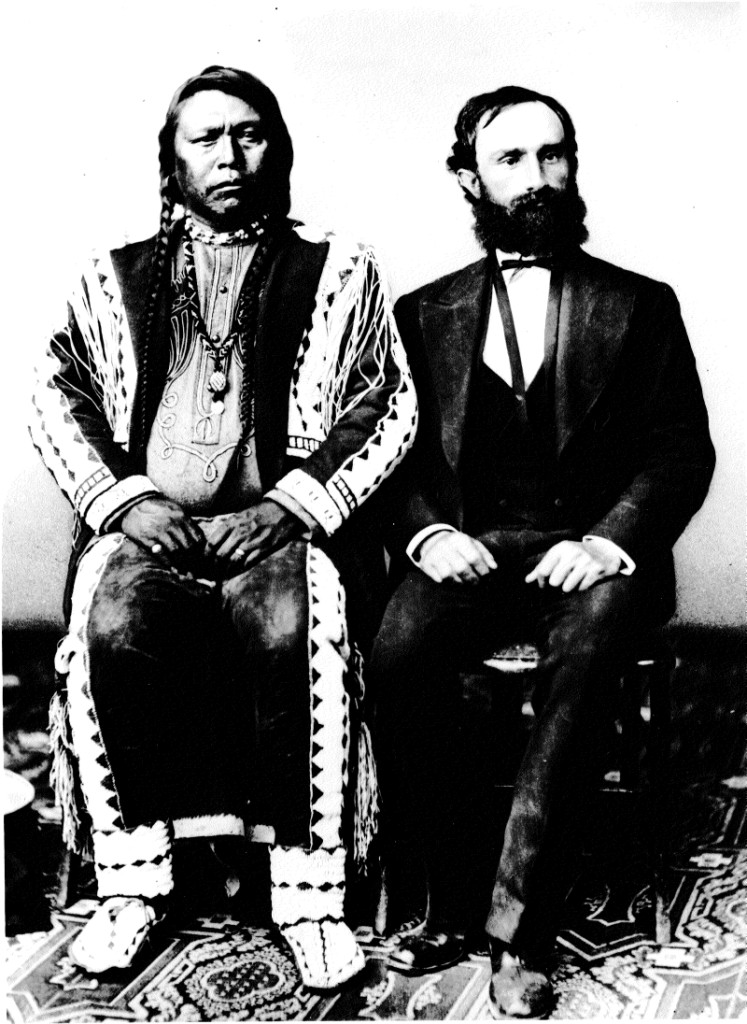Otto Mears
Values Codes I- E – L
Otto Mears was born in Kurland, Russia in 1840, the son of a Jewish Englishman and a Jewish Russian woman.
His parents died when he was very young, so he was passed between a series of family members moving to England, then sent to New York, out to California via the Isthmus of Panama, and finally arriving in San Francisco, in 1851.
His family member there could not be found, so he was placed in a boarding house, where this eleven-year-old helped support himself selling newspapers.
Later Otto Mears worked in stores in the California Gold County, where he also learned to be a tinsmith.
Returning to San Francisco, he was robbed of his savings. He then moved to Sacramento where he learned about mining and speculation in mining stocks.
The Civil War Years
In 1861, Otto Mears answered President Lincoln’s first call by enrolling in Company H of the California Volunteers.
His unit was ordered to Los Angeles, then New Mexico, to prevent the Confederacy from invading the territory.
They then fought Navajos in New Mexico, reinforcing Kit Carson.
Otto Mears was discharged after serving slightly over three years of service.
A Driven Man
Otto Mears worked in a number of Jewish stores in New Mexico before moving to Colorado, where he opened his own store in Conejoso.
He moved to Saguache, Colorado in 1866, filling government contracts for lumber and grain in mills he built.
He also acquired land on which he cultivated oats and potatoes. There he purchased the first “modern” threshing machine seen in Colorado.
Mears was appointed Treasurer of the new Saguache County.
He accepted farm produce as taxes in place of money from many poor immigrant farmers, helping to keep the new county solvent and settlers on their land.
In order to move wheat over to the Arkansas Valley, where gold had been discovered, Otto Mears obtained a charter to improve the road over the Poncha Pass and built his first toll road.
Eventually Mears build over 450 miles of toll roads in Southern, Colorado, allowing the vast area to become economically viable.
Indian Affairs
In 1874, Otto Mears started the Saguache Chronicle as a vehicle to promote his interests in the San Luis Valley.
It was during this period that he became intensely involved with the Ute Indians, learning to speak their language and thereby winning their respect.
Otto Meyers became a close friend of Chief Ouray, leader of the Utes.
Mears was a major factor in negotiations on the creation of reservation lands for the Utes, an increasingly difficult task as more and more settlers came to Colorado.
After the completion of one treaty, Mears accompanied Chief Ouray and nine important Ute chiefs on a grand tour to Washington, DC, where they were received by President and Mrs. Grant – and then on to New York for the circus, the zoo, and even the art galleries.
In 1879, when the government’s Indian Agent, Nathan Meeker, attempted to force the Ute into an agrarian way of life, there occurred the Meeker Massacre where Meeker and most of his staff were murdered, and their women held as captives — all because the Utes considered agriculture to be women’s work.
Otto Mears was called in to aid as interpreter in rescuing the women – which was successful.
Many settlers were fearful of more Indian attacks.
After an extended series of conferences in Colorado and Washington, at the advice of Otto Mears, it was agreed that the tribes would be moved to land in Utah.
Mears finally secured the approval of the Utes after they were convinced it was a good piece of land.
Mears understood that it would be better for the Utes to have their new land far enough away from the growing settler population of Colorado, than have it taken from them, bit by bit, if they remained in the state.
Still Driven
In the mid-1870’s Otto Mears began obtaining mail delivery routes between the various southern counties of Colorado.
In 1880, he was elected to the Colorado legislature.
In 1877, Mears experimented with new types of farming equipment, and acted as an agent for the Denver & Pacific Railroad, and established a successful hardware store in Saguache, called Mears & Company.
But toll roads remained his major activity.
There are few figures in Colorado’s history as driven as Otto Mears. For fifty years after the Civil War, he was prominent in politics, Indian relations, and transportation development.
Otto Mears then moved to the East Coast, where he continued to invest in railroad and manufacturing projects.
Community
Otto Mears was a long time member of Temple Emanuel of Denver.
Family
Otto Mears married Mary Kampfshulte in 1870.
They had three daughters, two of whom survived to adulthood.
Otto Mears passed away in Pasadena, California in 1931.
Source
- Michael Kaplan, “Colorado’s Big Little Man,” Western States Jewish Historical Quarterly 4/3.
Note: Michael Kaplan was a doctoral candidate in history at the University of Colorado, and Otto Mears was his subject. The extensive footnotes in this 1972 issue of WSJHQ contain many primary source materials for serious researchers.

